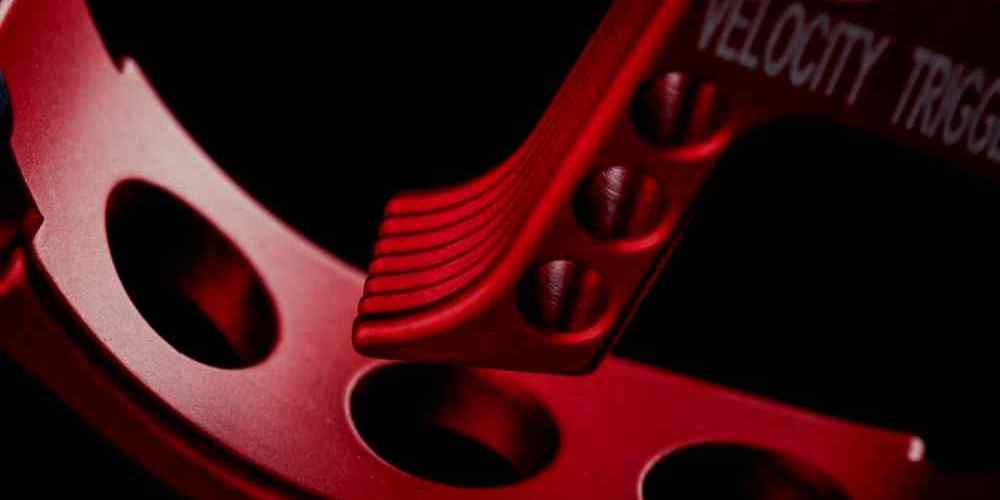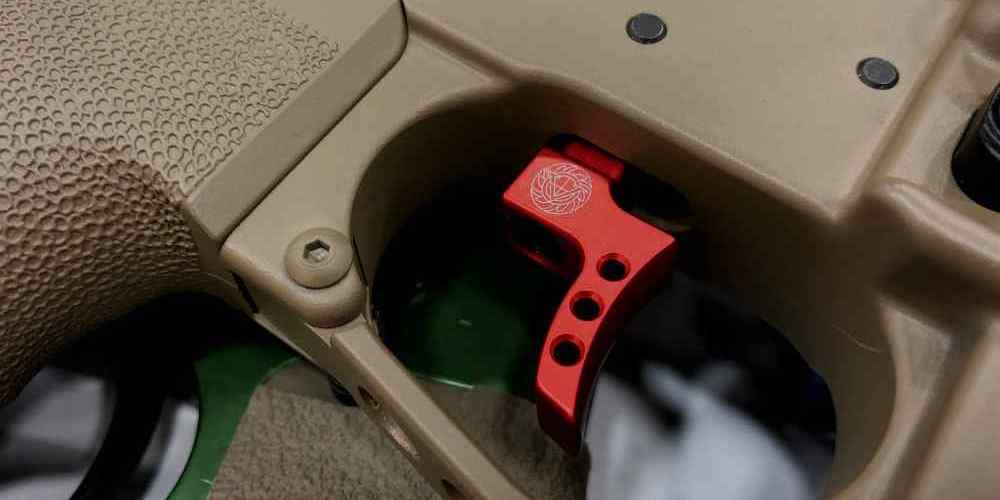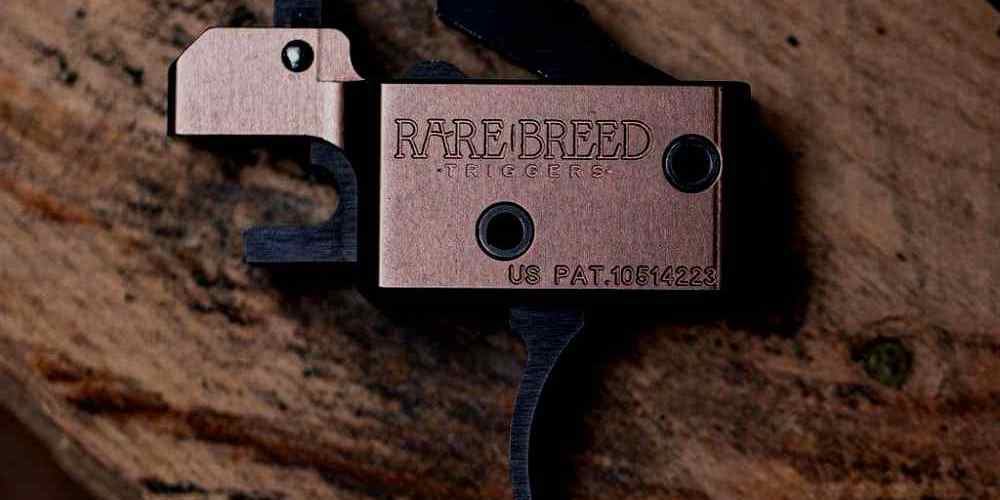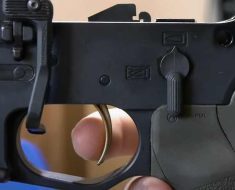“Master your AR15 trigger with precision and speed through targeted drills for enhanced muscle memory.”
Dry Fire Drills for AR15 Trigger Control
When it comes to shooting accurately with your AR15, trigger control is key. The way you manipulate the trigger can greatly affect your shot placement, so it’s important to practice and develop good habits. One of the best ways to improve your trigger control is through dry fire drills. Dry firing is the act of practicing your shooting technique without live ammunition, and it can be a highly effective way to improve your muscle memory and overall shooting skills.
One of the most basic dry fire drills for AR15 trigger control is simply practicing pulling the trigger smoothly and consistently. Start by ensuring your firearm is unloaded and pointing in a safe direction. Then, focus on squeezing the trigger slowly and steadily, without jerking or flinching. This will help you develop a smooth trigger pull, which is essential for accurate shooting.
Another great drill for improving trigger control is the “ball and dummy” drill. This involves loading your magazine with a mix of live rounds and dummy rounds (which do not fire). As you shoot, pay attention to how you react when you encounter a dummy round. If you flinch or jerk the trigger, it will be immediately apparent. This drill can help you identify and correct any bad habits you may have developed.
One important aspect of trigger control is follow-through. This refers to the act of continuing to hold the trigger back after the shot has been fired. Many shooters have a tendency to release the trigger too quickly, which can affect their accuracy. Practice follow-through by holding the trigger back for a few seconds after each shot, focusing on maintaining a steady grip and sight picture.
Another useful drill for improving trigger control is the “balance drill.” This involves balancing a coin on the front sight of your AR15 while dry firing. The goal is to pull the trigger smoothly and consistently without disturbing the coin. This drill can help you develop a light touch and fine motor skills, which are essential for accurate shooting.
One final dry fire drill for AR15 trigger control is the “wall drill.” This involves pressing the trigger against a wall or other solid object while dry firing. The idea is to simulate the resistance you would feel when firing a live round, helping you develop a consistent trigger pull. This drill can also help you identify any issues with your grip or stance that may be affecting your shooting.
In conclusion, practicing dry fire drills for AR15 trigger control is a great way to improve your shooting skills. By focusing on smooth, consistent trigger pulls and developing good habits, you can greatly enhance your accuracy and precision. Incorporate these drills into your regular training routine, and you’ll see a noticeable improvement in your shooting performance. Remember, practice makes perfect, so keep at it and watch your skills grow.
Live Fire Drills to Enhance Trigger Reset
When it comes to improving your shooting skills with an AR15, one of the most important aspects to focus on is your trigger control. The way you manipulate the trigger can greatly impact your accuracy and overall performance. One effective way to enhance your trigger control is through live fire drills that focus on trigger reset.

Trigger reset is the process of allowing the trigger to move forward just enough to reset the firing mechanism without fully releasing it. This allows for quicker follow-up shots and better control over your shots. By practicing trigger reset drills, you can improve your muscle memory and become more proficient with your AR15.
One popular drill to enhance trigger reset is the “Wall Drill.” To perform this drill, start by aiming at a target downrange and slowly squeeze the trigger until the shot breaks. Once the shot is fired, continue to hold the trigger to the rear while maintaining sight alignment. Then, release the trigger just enough to reset it without fully releasing it. Repeat this process several times to ingrain the proper trigger reset technique into your muscle memory.
Another effective live fire drill for improving trigger reset is the “Dot Torture Drill.” This drill involves shooting a series of dots on a target at varying distances. Each dot represents a different shooting position or scenario, such as standing, kneeling, or prone. By focusing on trigger reset during each shot, you can improve your overall shooting proficiency and accuracy.
One key aspect of trigger reset drills is to focus on consistency. Make sure to maintain a steady grip on the rifle and apply consistent pressure to the trigger for each shot. By practicing proper trigger control, you can develop a smooth and consistent shooting technique that will translate to improved accuracy on the range.
In addition to live fire drills, dry fire practice can also be beneficial for enhancing trigger reset. Dry fire drills allow you to focus solely on trigger control without the distraction of recoil or noise. By incorporating both live fire and dry fire drills into your training regimen, you can develop a well-rounded approach to improving your shooting skills with your AR15.
As you continue to practice trigger reset drills, pay attention to any inconsistencies or errors in your technique. By identifying and correcting these issues, you can fine-tune your shooting skills and become a more proficient shooter. Remember to always prioritize safety and follow proper firearm handling procedures while training with your AR15.
In conclusion, training with your AR15 trigger is essential for improving your shooting skills and overall performance. By incorporating live fire drills that focus on trigger reset, you can enhance your muscle memory and develop a more consistent and accurate shooting technique. Practice regularly and stay focused on proper trigger control to become a more proficient shooter with your AR15.
Speed Shooting Techniques with Your AR15 Trigger
When it comes to improving your shooting skills with your AR15, one of the most important aspects to focus on is your trigger control. The way you manipulate the trigger can greatly affect your accuracy and speed when shooting. Developing muscle memory through training drills can help you become more proficient with your AR15 trigger, leading to better performance on the range or in a competition.
One of the key drills to improve your trigger control is the “trigger reset drill.” This drill involves pulling the trigger and then slowly releasing it until you feel and hear the trigger reset. By practicing this drill repeatedly, you can train your muscles to quickly and efficiently reset the trigger after each shot, allowing you to fire follow-up shots more rapidly and accurately.
Another effective drill for improving trigger control is the “trigger squeeze drill.” In this drill, you focus on applying steady pressure to the trigger without disturbing your sight alignment. By practicing this drill, you can develop a smooth and consistent trigger pull, which is essential for accurate shooting. Remember to focus on the front sight and maintain proper breathing and stance throughout the drill.
To further enhance your trigger control, you can also incorporate the “trigger slap drill” into your training routine. This drill involves deliberately slapping the trigger to simulate a flinch or jerk reaction. By practicing this drill, you can identify any issues with your trigger control and work on correcting them. Remember to focus on maintaining a smooth and controlled trigger pull, even when faced with unexpected movements or distractions.
In addition to these drills, it’s important to practice shooting from different positions and distances to simulate real-world shooting scenarios. By varying your training routine, you can improve your overall shooting skills and adapt to different shooting conditions. Remember to focus on proper grip, stance, and sight alignment while practicing with your AR15 trigger.
As you continue to train with your AR15 trigger, remember to stay patient and consistent. Developing muscle memory takes time and practice, so don’t get discouraged if you don’t see immediate results. Keep practicing the drills mentioned above and incorporate them into your regular training routine to see improvement over time.
In conclusion, training with your AR15 trigger is essential for improving your shooting skills and performance. By practicing drills that focus on trigger control, such as the trigger reset drill, trigger squeeze drill, and trigger slap drill, you can develop muscle memory and improve your accuracy and speed when shooting. Remember to vary your training routine and practice shooting from different positions and distances to simulate real-world scenarios. With dedication and practice, you can become more proficient with your AR15 trigger and enhance your overall shooting skills.
Trigger Finger Placement and Grip Exercises
When it comes to shooting accurately with your AR15, having proper trigger finger placement and grip is crucial. Developing muscle memory through consistent training drills can help improve your shooting skills and overall performance. In this article, we will discuss some exercises and drills that can help you enhance your trigger finger placement and grip with your AR15.
One of the first things to focus on when training with your AR15 is ensuring that your trigger finger is placed correctly on the trigger. Your trigger finger should be positioned on the trigger pad, not the joint. This will help you achieve a consistent trigger pull and improve your accuracy. To practice proper trigger finger placement, try dry firing your AR15 while focusing on keeping your finger on the trigger pad. This will help you develop muscle memory and improve your shooting technique.
Another important aspect of shooting with your AR15 is having a proper grip on the rifle. Your grip should be firm but not too tight, allowing you to control the recoil and maintain stability while shooting. To improve your grip strength and technique, try incorporating grip exercises into your training routine. Grip strength trainers, such as hand grippers or grip balls, can help strengthen your hands and improve your overall grip on the rifle.
In addition to grip exercises, there are also specific drills that can help you develop muscle memory for proper trigger finger placement and grip. One effective drill is the “trigger reset drill.” This drill involves dry firing your AR15 and focusing on releasing the trigger slowly until you hear and feel the trigger reset. By practicing this drill regularly, you can improve your trigger control and develop a smooth trigger pull.
Another useful drill for improving trigger finger placement and grip is the “balance drill.” This drill involves holding your AR15 in a shooting position for an extended period of time, focusing on maintaining a steady grip and trigger finger placement. This drill can help improve your stability and control while shooting, as well as develop muscle memory for proper grip and trigger finger placement.
It is important to remember that consistency is key when it comes to training with your AR15 trigger. By incorporating these exercises and drills into your regular training routine, you can develop muscle memory for proper trigger finger placement and grip, ultimately improving your shooting skills and performance with your AR15. So, next time you hit the range, be sure to focus on your trigger finger placement and grip, and watch your shooting accuracy and overall performance improve.
Transition Drills for Quick Target Acquisition
When it comes to shooting with precision and speed, muscle memory plays a crucial role in ensuring consistent and accurate performance. One of the best ways to develop muscle memory is through regular training and practice with your AR15 trigger. By incorporating specific drills into your training routine, you can improve your muscle memory and enhance your overall shooting skills.
Transition drills are an essential component of training with your AR15 trigger. These drills focus on transitioning quickly and smoothly between multiple targets, helping you develop the ability to acquire and engage targets efficiently. By practicing transition drills regularly, you can improve your speed, accuracy, and overall performance when shooting with your AR15.
One effective transition drill is the “3-2-1” drill. In this drill, set up three targets at varying distances from each other. Start by engaging the first target with two shots, then transition to the second target and engage it with two shots, and finally transition to the third target and engage it with one shot. This drill helps you practice transitioning between targets quickly and accurately, improving your overall target acquisition skills.
Another useful transition drill is the “box drill.” In this drill, set up four targets in a square formation, with each target representing a different direction (front, back, left, right). Start by engaging the front target with two shots, then transition to the back target and engage it with two shots, followed by the left and right targets. This drill helps you practice transitioning between targets in different directions, improving your ability to acquire and engage targets from various angles.
When performing transition drills, focus on maintaining proper shooting fundamentals, such as grip, stance, and sight alignment. By practicing these drills with proper technique, you can develop muscle memory that will help you perform consistently and accurately in real-world shooting scenarios.
In addition to transition drills, incorporating movement into your training routine can further enhance your muscle memory and shooting skills. Movement drills involve moving between different shooting positions while engaging targets, simulating real-world shooting scenarios where you may need to shoot on the move.
One effective movement drill is the “lateral movement drill.” In this drill, start by engaging a target while moving laterally to the left or right. Practice maintaining proper shooting fundamentals while moving, such as keeping your eyes on the target, maintaining a stable shooting platform, and controlling your trigger press. This drill helps you develop the ability to shoot accurately while on the move, improving your overall shooting skills.
Another useful movement drill is the “forward and backward movement drill.” In this drill, start by engaging a target while moving forward or backward. Practice maintaining proper shooting fundamentals while moving, such as controlling your breathing, maintaining a steady pace, and adjusting your shooting position as needed. This drill helps you develop the ability to shoot accurately while moving in different directions, enhancing your overall shooting performance.
By incorporating transition drills and movement drills into your training routine, you can improve your muscle memory, enhance your shooting skills, and become a more proficient shooter with your AR15 trigger. Practice these drills regularly, focus on proper technique, and strive for consistency in your performance. With dedication and effort, you can develop the muscle memory needed to shoot with precision and speed in any shooting scenario.








